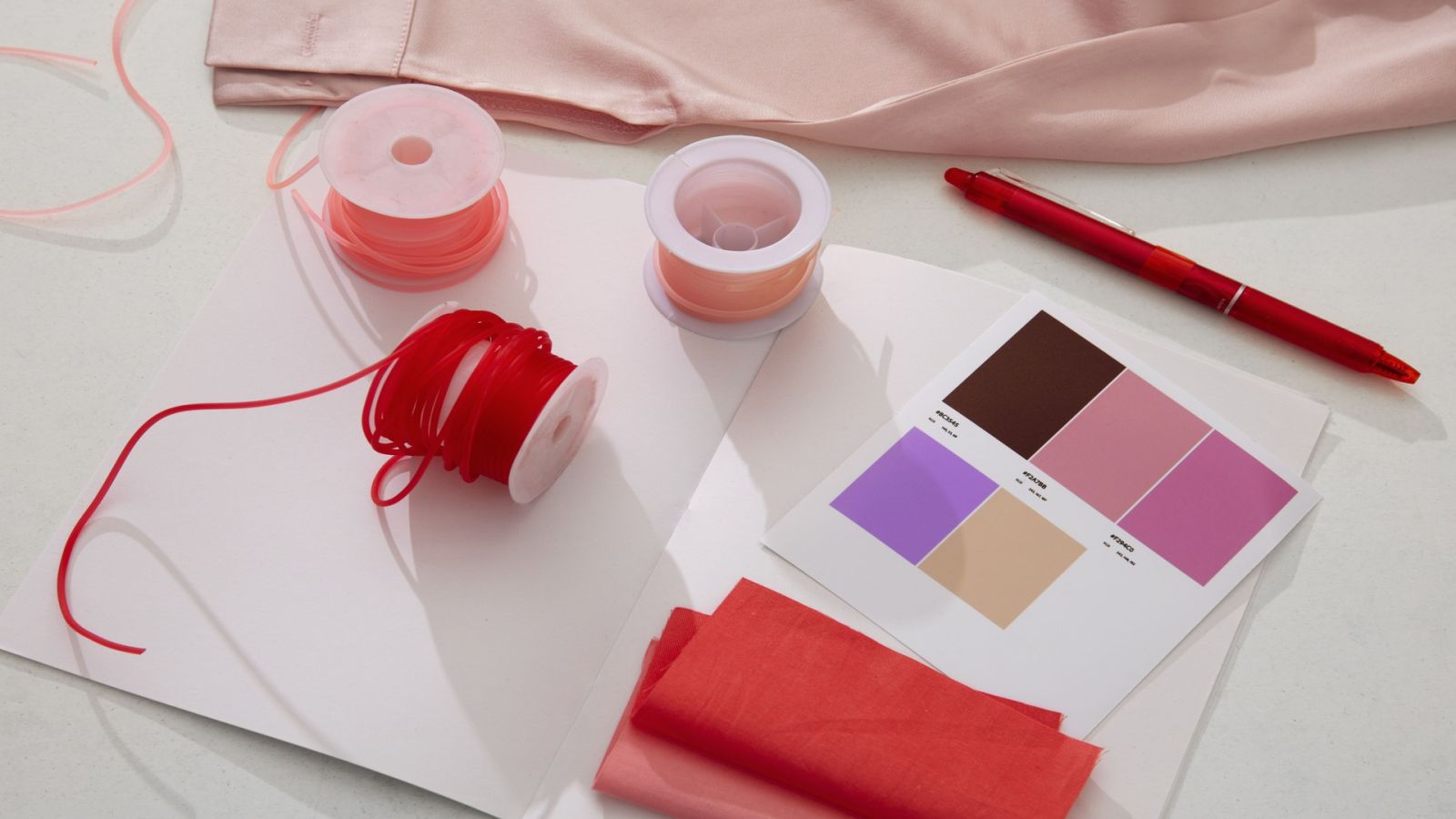Color is arguably the most important element when it comes to textile and apparel. It influences everything whether it is design aesthetics or consumer purchasing decision.
Almost 85% of people think color is one major factor when buying a product. In the fashion industry, apparel brands take help from color psychology to instill emotional connection, build a strong brand image and drive sales.
Most people think that the color remains the same no matter the settings and environment. However, color is not a static element and can change under different circumstances and factors.
The color of a dress may attract you when you see it online. But, when you see the same dress in the retail store, the color may appear different to you. This happens because the tones, shades, and hues of the fabric varies according to the light source.
Today, textile manufacturers emphasize color perception to ensure accurate representation of textiles in various settings. The process often requires them to counter the problem of metamerism that is a prominent factor in production delays, reworks, and wastage of resources.
The Science Behind Color Perception

How we perceive color is a rather complex but intriguing phenomenon. Colors are part or rather wavelengths of light that an object either absorbs or reflects. It is a process that involves both biology and physics.
The cone cells in our eyes help perceive the colors. These are sensitive to the different wavelengths of light. As the light enters our eyes, the cone cells generate certain signals and send them to the brain. Those signals are processed and then allow us to determine a specific color.
Every object our eyes see absorbs or reflects certain wavelengths. In textiles, the color of fabric is the result of specific wavelengths that are either reflected or absorbed. But, the end color we see is also affected by factors like the light source, texture of the fabric, and surrounding conditions.
The Role of Different Light Sources
The light in our surroundings comes from various natural and artificial sources. Each source has certain properties that influence the perceived color.
Let us review the common light sources
Natural Light
Sunlight is a natural light source with daylight offering the most accurate color rendering. It contains all wavelengths of the visible spectrum. However, the color of textiles still changes depending on the time of day.
Incandescent Lighting
The incandescent bulbs are artificial light sources that emit a warm and yellowish light. This type of lighting enhances the warm colors but distorts the cooler hues.
Fluorescent Lighting
The fluorescent light varies due to the spectral distribution which emphasizes certain colors but mutes the others. This leads to significant color shifts as compared to daylight.
LED Lighting
LEDs are energy-efficient light sources that come in a range of color temperatures, from cool to warm. The LED lights provide consistent and accurate color rendering making them a popular choice in the textile industry.
The Influence of Color Temperature on Textile Appearance
The color temperature shows the warmth or coolness of the light source. The set of numerical values measures the coolness or warmness of a light source. The unit of measurement is Kelvin (K). The lower temperature like 2700K produces a warm and yellowish light, while a higher temperature like 5000K produces cool and bluish light.
When placed under different color temperatures, the textile will show clear variation in the perceived hue. The warm light will make the colors such as red and orange appear more vibrant as those have longer wavelengths. Conversely, the cool light enhances the colors green and blue which have the shorter wavelengths.
In the textile industry, manufacturers have to evaluate and control the color temperature to ensure consistency of the fabric from initial to final inspection. The goal is to avoid variation in the fabric's true color under various lighting conditions, that can otherwise lead to discrepancies and delays.
What Is Metamerism?

One of the most common challenges in textile color selection and evaluation is ‘metamerism.’ It happens when two colors appear to match in one light source but appear different in another light source. The reason is that the two samples have different spectral reflectance curves but have the same perceived color under a specific light source. t
A light source may stimulate the eye in such a way that different spectral combinations appear identical to match the samples. However, when the light source changes, the balance of reflected wavelengths also changes, and the samples no longer match.
For example, a red textile may look aligned with a product sample under fluorescent lighting. But may appear different with an orange or pink hue when viewed in incandescent light.
In textile manufacturing variations, the dye formulations, and substrate differences can all contribute to variations in spectral reflectance. This increasing the chance of metamerism and even a small variation in color leads to production delays, reworks and customer dissatisfaction. Moreover, the human eye is unable to detect the precise difference in spectral reflectance, and proper tools are required for color selection and evaluation.
How to Prevent Metamerism?
Due to the type of fabric and different light sources, it is difficult to completely eliminate metamerism. However, certain steps are necessary to minimize the impact of metamerism in textile production.
Evaluate Color under Every Light Source
The best way to prevent metamerism is to assess color samples in multiple light sources. By evaluating color in different lights, manufacturers can easily identify the potential discrepancies before production begins. They can also ensure that the color matches in every condition.
Set Standard Guidelines
The textile manufacturers must establish clear guidelines for color matching. This can include which light sources will be used for evaluating color, specifying tolerances for color variation
Use a Spectrophotometer
It is an instrument that measures the amount of light that is absorbed by the sample. It works by passing a beam through a sample and measuring its light intensity. The spectrophotometer collects detailed color data and exact spectral properties of a fabric. It not only identifies metamerism but ensures color matching on precise data rather than visual observation.
Careful Dye Selection
Choosing dyes with similar spectral reflectance curves can reduce the risk of metamerism.
How ColordesQ help Achieve Accurate Color Matching and Consistency

For textile brands, metamerism is a common problem when matching colors for different fabrics or dyes. These absorb and reflect light differently, so the color appears different under various conditions. Moreover, different light sources are used during different stages of production. It can be natural light for fabric inspection, fluorescent light in the dyeing stage, and incandescent light for final product inspection.
To prevent a challenge such as metamerism, textile brands need a color management solution to stimulate appearance of fabric under different lighting conditions. The manufacturers can identify the color inconsistency and adjust the color or dye formulations accordingly.
ColordesQ is one such software that is designed to ensure color matching and accuracy throughout the production process. The software is equipped with features to standardize the color evaluation process and help achieve desired color specifications under any lighting condition. Developed by Triple Tree Solutions, it works on basis of spectral data which says all color comparisons are objective.
Here is how ColordesQ help fix challenge of color perception and metamerism
Accurate Color Measurement and Evaluation
ColordesQ integrates with spectrophotometers to provide precise color data, enabling objective evaluation of textile samples. With the use of these tools, textile manufacturers can assess color in real-time and detect any discrepancies that may arise during production, allowing for quick corrective actions.
Seamless Color Communication Across Teams and Suppliers
Color matching can often involve multiple teams and suppliers across different locations. ColordesQ facilitates seamless digital color communication by allowing brands and manufacturers to share color data electronically. This ensures that color specifications are accurately communicated, reducing the chances of misunderstandings, minimizing waste, and ensuring consistency across different production sites.
Real-Time Color Adjustments and Feedback
ColordesQ enables real-time feedback on color samples. If any variations in color are identified during the production process, adjustments can be made immediately, avoiding delays and costly rework. This ability to make swift adjustments ensures that color accuracy is maintained from the initial design phase to final production
Consistency Across Multiple Production Batches
Maintaining color consistency across various production batches is essential for ensuring that the final product meets the expected quality standards. ColordesQ allows manufacturers to track color variations across multiple batches, enabling them to ensure that colors remain consistent even when materials or production conditions change.
Color-Accurate Viewing and Simulation
ColordesQ offers digital color simulation tools that allow designers and manufacturers to see how colors will appear under different lighting conditions. By simulating how textiles will look in natural, incandescent, fluorescent, and LED light, ColordesQ helps brands predict and correct any color discrepancies before the product reaches the consumer.
READ: The Use of Advanced Color Matching Software for Accurate Textile Dyeing
Wrapping Up
Lighting plays a crucial role in how colors are perceived in textiles, making color accuracy a significant challenge for designers, manufacturers, and consumers. By understanding the science behind color perception, the impact of different light sources, and the phenomenon of metamerism, textile professionals can make informed decisions that ensure consistency across products and lighting conditions.
Tools like ColordesQ offer an effective solution by providing accurate color measurements, seamless communication, and real-time feedback. By integrating digital color management solutions, the textile industry can mitigate common color discrepancies and deliver products that meet the highest standards of quality and consistency.
Struggling with color consistency in textiles?
Say goodbye to color discrepancies! Discover how ColordesQ helps you achieve accurate color matching and consistency in every batch.
